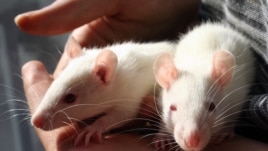


Image source : Wikimedia Commons
**************************************************************
Compound in Vegetables Protects Against Radiation
October 14, 2013
Researchers at the Georgetown University Medical Center say their findings show that a compound derived from cruciferous vegetables, like cabbage, cauliflower and broccoli, protected rats and mice from lethal doses of radiation.The researchers, in a study published today in the Proceedings of the National Academy of Sciences (PNAS), say that their findings suggests that DIM or Diindolylmethane may protect normal tissues during radiation therapy for cancer treatment and prevent or ease sickness caused by radiation exposure.
The compound is touted by some experts as a “super antioxidant” to help reduce inflammation in the body. Some also claim that DIM helps prevent several forms of cancer although research findings on this have been mixed.
"DIM has been studied as a cancer prevention agent for years, but this is the first indication that DIM can also act as a radiation protector," said the study's corresponding author, Eliot Rosen, MD, PhD, of the Georgetown Lombardi Comprehensive Cancer Center.
To reach their findings the researchers conducted experiments on rats and mice that were irradiated with lethal doses of gamma ray radiation.
Some of the rats were injected with a dose of DIM 10 minutes after first being exposed to the radiation and were given an additional dose each day for two weeks.
The remaining rodents used in the experiment were not given the DIM and were left untreated.
Rosen said that the results of their experiments were “stunning”. "All of the untreated rats died, but well over half of the DIM-treated animals remained alive 30 days after the radiation exposure," he said.
The researchers found that there was no real difference in the amount of protection offered by the DIM whether the first injection was given a day before or after their rodent test subjects were exposed to the gamma radiation.
The Georgetown team also found that there wasn’t as much of a reduction in red and white blood cells and platelets – common side effects in those who are undergoing radiation treatment for cancer - in the irradiated mice that were treated with DIM.
The researchers say that their work revealed two potential uses of the compound. "DIM could protect normal tissues in patients receiving radiation therapy for cancer, but could also protect individuals from the lethal consequences of a nuclear disaster," said Rosen.











No comments:
Post a Comment
Hello and thank you for visiting my blog. Please share your thoughts and leave a comment :)